Zoarcoidei
There's nothing really linking these families together to distinguish them from other similar suborders...but we're going to group them together and talk about them together anyways.
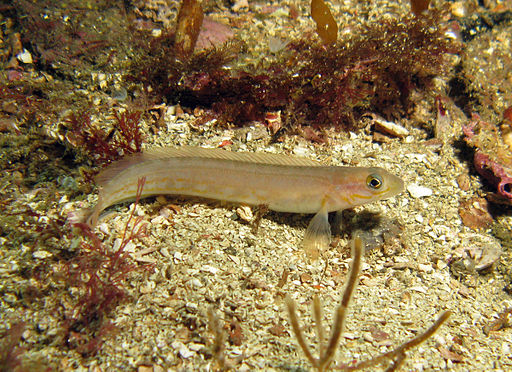
By Janna Nichols [Public domain], via Wikimedia Commons
Bathymasteridae: Ronquils
There are seven species of these fishes, and are considered the most ancestral of the zoarcoids. They have long dorsal and anal fins, and a high lateral line.

By Derek Keats from Johannesburg, South Africa (Diver holding an ocean pout) [CC BY 2.0], via Wikimedia Commons
Zoarcidae: Eelpouts
This much larger family contains fishes with tapered bodies and a continuous fin from dorsal to anal. The pelvic fins are small to absent and are located in front of the pectoral fins, even occasionally being below the eyes.
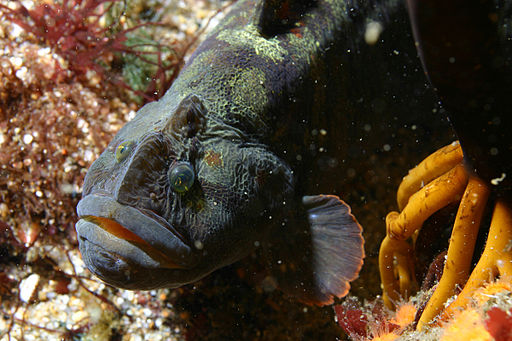
By NOAA/MBARI [Public domain], via Wikimedia Commons
Stichaeidae: Pricklebacks
These fishes get their name from their spiny dorsal fin, which has mainly spines in addition to some soft rays. Some species have multiple lateral lines while others lack it entirely.
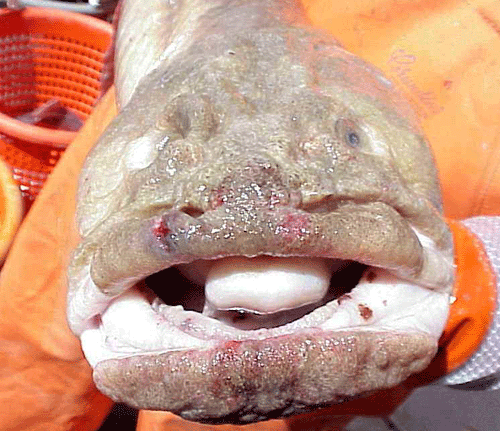
By NOAA [Public domain], via Wikimedia Commons
Cryptacanthodidae: Wrymouths
Don't believe any of the thousands of bits of evidence for evolution? How about the wrymouths, who lack pelvic fins but have a pelvic girdle in the skeleton? This indicates that at some point in the lineage, they had pelvic fins but were secondarily lost. There is one genus Cryptacanthodes with four species.
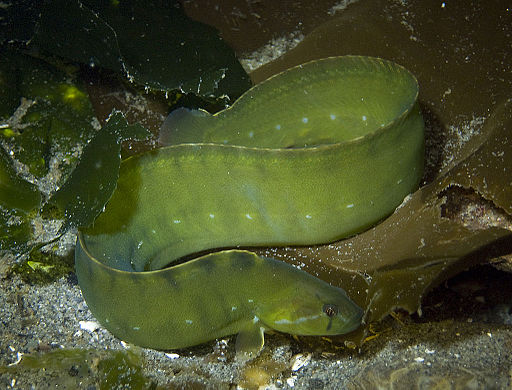
By Jeanne Luce (Own work) [Public domain], via Wikimedia Commons
Pholidae: Gunnels
There are three genera with fifteen species. The dorsal fin is extremely long with many spines. Interestingly, the vertebral centrum is asymmetrical (the centrum is the central disc of the fish vertebra, with a neural spine going up and a hemal spine going down). Unfortunately I could not find any pictures of this, so if you find one, send it my way!
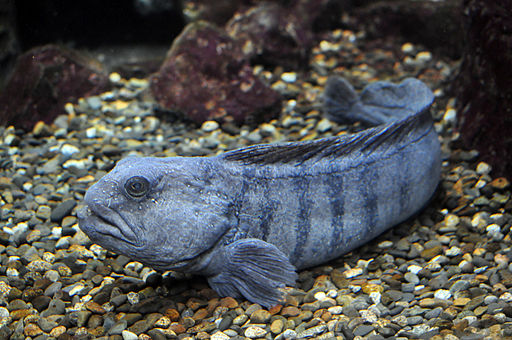
Citron via Wikimedia Commons
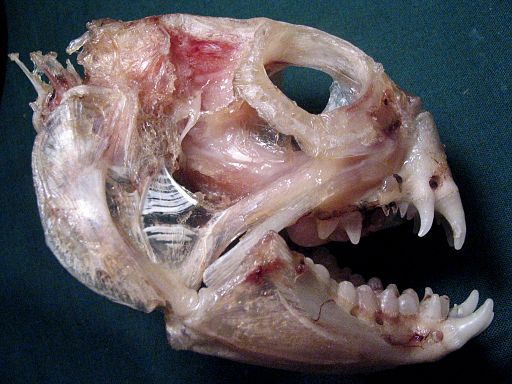
By Matthieu Deuté (Own work) [CC BY-SA 3.0 or GFDL], via Wikimedia Commons
Anarhichadidae: Wolffishes
These recognizable fishes are a little scary looking. They have long tapered bodies with big heads full of scary teeth. The front ones are sharp and pointed, while the ones in the back are more similar to molars. This is unusual as most fishes have uniform teeth. They can grow longer than a person (2.5 meters). They also have minimal lateral lines and scales.
Ptilichthyidae: Quillfishes
There is one species, Ptilichthys goodie. It has an extremely long, slender body, and lacks both caudal and pelvic fins.
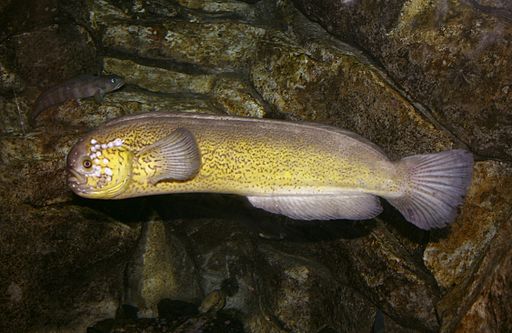
By David Csepp, NMFS/AKFSC/ABL. (NOAA Photo Library: fish4013) [CC BY 2.0 or Public domain], via Wikimedia Commons
Zaproridae: Prowfishes
There is one species, Zaproa silenus. It lacks pelvic fins and a lateral line, though it does have large pores on the head. The mouth is upturned and the head is rounded like a prow (hence the name).
Scytalinidae: Graveldivers
There is one species, Scytalina cerdale. These elongated fishes lack pelvic fins, scales, and lateral lines, and have small eyes located near the top of the head.